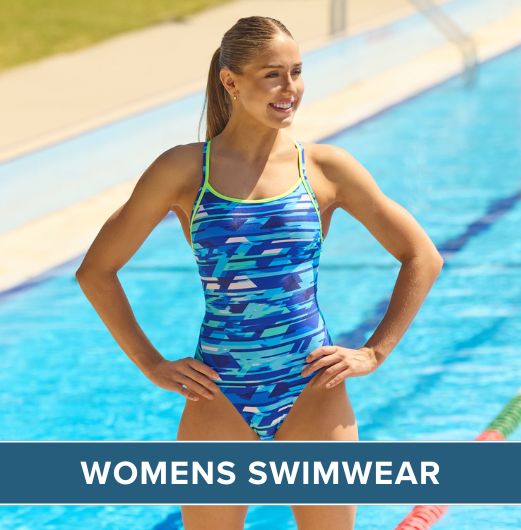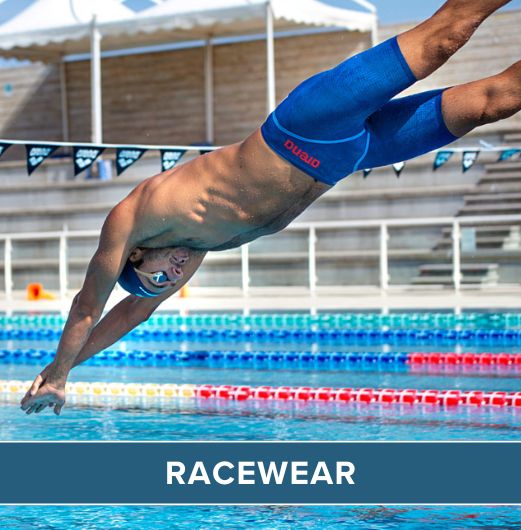To master a racing dive takes practice. The most common dive in competitive swimming is the grab start. This provides you with a quick and smooth start that gets you into the water very efficiently. The race will not begin until all the competitors are still and ready to dive. In fact, you can be disqualified if you fall into the water before the starter's gun is fired or if you are slow getting ready.

Here are some tips to help you really power off the blocks:
Your starting position is all important - the better it is the better your dive will be. So, firstly make sure that you tuck your head as close to your knees as possible while keeping your hips as high as possible, trying not to push them backwards. Then let your toes curl over the edge of the block and slightly bend your knees. Put one hand on top of the other to create a streamlined effect and point your arms downwards towards the floor of the pool, at the same time have your palms facing the starting block or the wall.
Step 2:
The power of the dive comes from the push off, so it is important to push off with the greatest possible power. Push the palms of your hands into the block and then throw your arms forwards. As your throw your arms forwards lift your head slightly and let your body follow your head. Be careful not to lift your head for too long though, as this will make your feet enter the water at the same time as your hands causing a belly flop effect that is neither quick nor smooth. So, to recap, as soon as your feet leave the starting block you must ensure that your head is tucked in, your hips are up and your body is streamlined so that your head is the first part of your body to enter the water.
Step 3:
A helpful technique to achieving a smooth dive is to imagine that you are trying to dive through a hoop without making a splash. As you enter the water, let your hands and head lift up a bit and try to keep your hands together and streamlined until you reach the surface of the water and begin your first stroke. To seamlessly bridge the transition between diving and swimming try to imagine that there is no difference between the two. Anyone watching you dive should not be able to tell where the dive finishes and the swimming begins.
 Free Tracked UK Delivery
Free Tracked UK Delivery Hassle Free Returns
Hassle Free Returns Next Working Day OPTION
Next Working Day OPTION Found It Cheaper?
Found It Cheaper?













